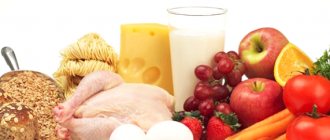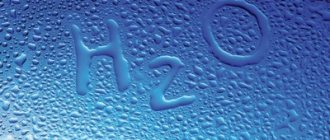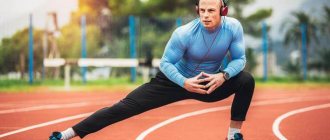Many athletes in gyms and sports sections have heard from their colleagues and trainers about the existence of an anabolic or protein-carbohydrate window. It's time to figure out what it is, how to close this carbohydrate window, and whether it even exists in reality or is it myth among athletes.
The carbohydrate (anabolic) window, or as it is often called the protein-carbohydrate window, is a period of time (usually 30-40 minutes ) during which the human body experiences a maximum need for carbohydrates and proteins in order to achieve a pronounced anabolic response and muscle growth.
The nutrients consumed during the carbohydrate window go directly to restore the body after training, to stimulate the growth of muscle mass, strength, endurance, without being stored in fat.
Where does the carbohydrate window in the body come from?
In order to have energy to train, it must be taken from somewhere. The body primarily takes this energy from glycogen , that is, stored carbohydrates in the muscles and liver, which are some kind of energy “tanks” for athletes, from which carbohydrates are gradually consumed for energy .
excess carbohydrates (sugars) as glycogen. And as you probably already guessed, the more muscles an athlete has, the more energy “tanks,” which means you can eat more carbohydrates without fear of obesity. That is why many bodybuilders can afford a high daily caloric intake, but other athletes with small “tanks” cannot afford muscles, as they will become covered in fat very quickly.
When glucose in the bloodstream during exercise, the body begins to actively consume glycogen in an oxygen-deficient (by the reaction of anaerobic glycolysis) from the glycogen depot, for example, during strength training approaches to the “pump” or sprinting or by the reaction of aerobic glycolysis in an environment of excess oxygen , such as long-distance running or swimming, cycling or jumping rope at a moderate pace. Thus, the breakdown of glycogen from the glycogen depot contributes to a sharp increase in blood sugar levels, the athlete feels a surge of strength - a “second wind” .
As you probably already know from our other articles, first, when performing aerobic , glycogen is consumed, and only then fats , and the less oxygen is consumed, the greater the contribution carbohydrates , since all other things being equal, energy consumption by carbohydrates require 12% less oxygen for oxidation . Accordingly, fats begin to oxidize (burn) only with moderate cardio load , with an intensity of 50-60% of the maximum , and then after 20-30 minutes of doing the exercise.
The more intense the load, the more carbohydrates contribute to energy supply. That is why, for all people who want to lose weight, it is very important to perform aerobic exercises at a pulse rate no higher than 120-125 beats per minute fat burning are actively launched in the body .
Ultimately, glycogen reserves are wasted, and the body begins to actively break down triglycerides (fats). After all easily accessible energy reserves are exhausted, the muscles cease to resist the external load, failure , and then cramps occur . That is why we often see at marathon races how athletes without fail take so-called pit stops to close the carbohydrate window, that is, to supply fast carbohydrates to restore blood sugar levels.
Fueling with fast carbohydrates during marathon races
Also keep in mind that for trained athletes, with the same aerobic load, energy consumption is mainly due to the oxidation of fats, and only then carbohydrates, and for beginners , on the contrary, carbohydrates, and then fats, make a greater contribution to energy supply.
Fats are found in the body in almost unlimited quantities, but the supply of carbohydrates is quite limited , which is why experienced athletes burn fat faster and more efficiently than beginners. After all, the more oxygen the body can absorb, the higher its aerobic ability to train.
How long does the carbohydrate window last?
still unknown ; scientists are still arguing among themselves. However, in the traditional sense 30-40 minutes after training , but at the same time, studies have been conducted that say that it can reach up to 2-4 hours and even a whole day . That is, the body can actively absorb proteins and carbohydrates the whole day after training and actively direct them to the synthesis of new muscle structures.
How long does the carbohydrate window last?
Carbohydrate window for “drying”
In strength training, there is also such a thing as “drying”. Simply put, getting rid of fat mass while maintaining the muscle mass already gained. Used by both men and women. How to close the carbohydrate window in this case? Even professional trainers recommend using a multicomponent gainer (with the addition of vitamins and minerals). There the concentration of proteins and glucose is already balanced, and there is no fat at all.
How to close the carbohydrate window after training during the drying process, using only natural ingredients? The best option is a mixture of milk, whey protein (soy protein should not be used) and 1-2 small bananas.
The dosage of proteins is chosen as standard for an adult with physical, but not strength, activity. Simply put, during the cutting process, men 3 grams of protein per kilogram of live weight daily, women – up to 1.75 .
Closing the protein-carbohydrate window when losing weight, you will need up to 25-30 grams of protein and 80-120 grams of carbohydrates. Don't forget about berries and ascorbic acid - it also plays an important role in the breakdown of proteins (400 mg per day is more than enough).
The connection between hormones and the anabolic window
During training, the stress hormones cortisol and adrenaline , which also help to train, the first of which is responsible for the blood sugar level so that it is not extremely low, and the second, in conditions of stress, stimulates the functioning of the central nervous system and cardiovascular system. vascular system, enhances glucose synthesis, fat breakdown, increases tone and blood supply to muscles.
However, even after the training process, the influence of stress hormones on the body does not stop, they actively continue to have a negative impact on energy processes, destroying muscle mass, using proteins as an energy source, and fats, if you do not take nutrients for a long time, actively begin to be deposited. And our task, as athletes who want to maintain maximum muscle mass , or even increase muscle mass, is to neutralize the effect of adrenaline and cortisol on the body as quickly as possible.
insulin , which is actively produced by the pancreas in response to increased blood sugar levels, successfully deactivates the action of adrenaline and cortisol
However, insulin has one significant drawback : along with neutralizing stress hormones, it blocks the action of somatotropin , which by its nature has both a catabolic effect on the fat layer and an anabolic effect on muscles. In other words, growth hormone helps you lose weight and build muscle, but insulin prevents it from doing this. Therefore, we need to look for some kind of golden mean .
The connection between hormones and the anabolic window
Many practicing athletes , coaches and simply scientists recommend closing the anabolic window, depending on your body type and the pursued sports goal.
For example:
Endomorphs and mesomorphs , as well as all athletes whose goal is to lose weight (dry muscles), are recommended to consume proteins in the form of ready-made amino acids (an expensive option), or in the form of whey or egg protein . This approach to post-workout nutrition will protect muscles to the maximum from catabolism , quickly launch the processes of muscle fiber restoration and at the same time slightly increase insulin production.
For ectomorphs or “hard gainers” - people who find it very difficult to gain weight, it is recommended to close not only the protein window, but also the carbohydrate window, that is, after a workout, consume a high-calorie, protein-carbohydrate cocktail , for example, a gainer, or prepare it yourself at home.
Carbohydrate window when losing weight - how to close it?
What is the carbohydrate window after a weight loss workout? It is recommended to slightly increase the portion of proteins, but decrease carbohydrates . So-called “fitness bars” based on simple cereals are ideal for this purpose.
Is it possible to prepare a cocktail to close the carbohydrate window from natural ingredients? The simplest recipe:
- skimmed milk;
- 20-30 grams of whey protein;
- 1 tablespoon of condensed milk, honey or cane sugar (fructose is also great, but it takes much longer to break down);
- 1 medium pear.
It should be taken into account that the proposed options are suitable exclusively for building muscle mass and specifically for men . The option for losing weight is also suitable for women, you just need to remember about the permissible daily dose of protein . For men it is 2.5 grams per kilogram of live weight, for women it is 1.55-1.65 grams . The protein-carbohydrate window makes up approximately 15-20% of the total daily diet. This “dosage” should not be exceeded.
Effect of protein and carbohydrate intake on catabolism and muscle synthesis
In order to progress in bodybuilding, it is necessary to fill the amino acid pool (the necessary amount of amino acids to prevent catabolic processes), otherwise, for example, training on an empty stomach will lead to the opposite result due to the development of a negative nitrogen balance in the body, which will destroy muscles , despite the fact that the strength exercises themselves are aimed at their growth.
If you plan to exercise immediately after sleep , then keep in mind that at this time the body will especially need carbohydrates and proteins, which will subsequently have an anabolic and anti-catabolic effect on muscle tissue.
Another question arises at what time of intake to consume nutrients, and in general how important it is for the athlete.
Conduct scientific research ( Tipton KD, Rasmussen BB, Miller SL, Wolf SE, Owens-Stovall SK, Petrini BE, Wolfe RR: Timing of amino acid-carbohydrate ingestion alters anabolic response of muscle to resistance exercise. Am J Physiol Endocrinol Metab 2001, 281(2):E197-206. ), which indicate that taking even 6 grams of amino acids increases their concentration in the blood by 130% , which lasts for about two hours, and taking whey protein (study by Fujita S, Dreyer HC, Drummond MJ, Glynn EL, Volpi E, Rasmussen BB: Essential amino acid and carbohydrate ingestion before resistance exercise does not enhance postexercise muscle protein synthesis. J Appl Physiol 2009, 106(5):1730-9. ) at a dose of 20 grams generally increases the concentration amino acids by 440% within 3 hours after training. This is why the urgency of filling the post-workout protein window, which everyone writes about, is called into question, since taking 20 grams of protein , as we see from the study, maintains a significant spike in amino acids at a high level without the threat of muscle protein loss and poor recovery (this approach to post-workout nutrition is acceptable if you drink protein before training).
Athletes who go to training after work without consuming nutrients or before lunch necessarily a protein shake after training to suppress catabolism and start recovery processes.
According to the study by Bohe J, Low JF, Wolfe RR, Rennie MJ: Latency and duration of stimulation of human muscle protein synthesis during continuous infusion of amino acids. J Physiol 2001, 532(Pt 2):575-9 ., the anabolic effect of food (protein synthesis) after its consumption lasts about 3 hours , despite the fact that the level of amino acids still remains high in the blood.
The effect of protein and carbohydrate intake on muscles
As a conclusion, we can conclude the following: if you do not have the opportunity to consume nutrients at least 3-4 hours before training, then it is highly advisable for you to consume a protein-carbohydrate cocktail in an amount of at least 25 grams to suppress catabolic processes, and if you plan Immediately after training, eat a large protein-carbohydrate meal, then the importance of consuming protein before training is reduced .
Carbohydrates
As for carbohydrates, there is no scientifically valid data on how much and when they should be taken. Therefore, all the information that you have read anywhere and know was most likely collected empirically (experienced).
For example, carbohydrates, being an integral part of glycogen , are most important in sports where endurance , for example, running, skiing, swimming, which is why it is extremely important after aerobic training to fully supply the body with fast carbohydrates for a speedy recovery. usually recommended to take the same amount of carbohydrates as protein, or a little more, at one time.
As already written above, carbohydrate intake is most important for aerobic sports, and according to recent research ( Koopman R, Beelen M, Stellingwerff T, Pennings B, Saris WH, Kies AK, Kuipers H, van Loon LJ: Coingestion of carbohydrate with protein does not further augment postexercise muscle protein synthesis. Am J Physiol Endocrinol Metab 2007, 293(3):E833-42. ) showed that taking them together with proteins does not bring any advantage over the synthesis of new muscle structures , taking them after training even 0, 6 grams of carbohydrates per kg of body weight had no effect on the amino acid balance in the body for six hours compared to protein intake.
How does carbohydrate consumption affect muscles?
In addition, additional studies were conducted ( Staples AW, Burd NA, West DW, Currie KD, Atherton PJ, Moore DR, Rennie MJ, Macdonald MJ, Baker SK, Phillips SM: Carbohydrate does not augment exercise-induced protein accretion versus protein alone. Med Sci Sports Exerc. 2011, 43(7):1154-61. ) on the effect of carbohydrates on muscle growth, the essence of which was to measure the protein concentration in muscles after taking of whey isolate and combining it with 50 grams of maltodextrin ( fast carbohydrate). As a result, scientists found that leg strength training increased muscle protein synthesis in the same amounts, regardless of taking protein with carbohydrates or protein alone.
In other words, scientists have once again proven that protein synthesis is not affected by carbohydrate intake.
Therefore, in bodybuilding, the primary role will be played not by the time of carbohydrate intake, but by their quality and the total amount consumed per day.
Anabolic window after training - theory
For a long time, the theory of the anabolic (protein-carbohydrate) window was based on the opinion that intense training sessions lead to damage to muscle tissue and depletion of glycogen stores in them. There is some truth in this.
It was then proposed that consuming highly digestible protein (eg whey protein) and high glycemic index carbohydrates (eg dextrose) immediately after training quickly provided muscle tissue with nutrients, i.e. amino acids, glucose, etc. that leads to:
- increasing the speed of muscle recovery;
- increased synthesis of muscle proteins;
- replenishment of glycogen reserves;
- maximum muscle hypertrophy;
- increasing strength indicators.
The theory sounds quite convincing, which is probably why it quickly took root in the fitness and sports nutrition industry. However, in practice the body works in a slightly different way.
Consuming protein and carbohydrates during the anabolic window is thought to provide two primary benefits—preventing muscle tissue breakdown and increasing muscle protein synthesis.
Carbohydrates create a large insulin response, which prevents catabolic processes, and proteins, in turn, increase muscle synthesis.
Without a doubt, to gain muscle mass you need protein synthesis to exceed protein breakdown. However, eating after a workout does not help this. And that's why.
- First, muscle breakdown increases only slightly after intense strength training (breakdown rates are higher when training in a fasted state). Therefore, you should not worry about losing muscle tissue after training, unless you train on an empty stomach. Of course, it is unlikely that anyone in their right mind will go to the gym to lift iron on an empty stomach - after all, the body needs energy for training.
- Secondly, studies have shown that consuming protein and carbohydrates immediately after training does not affect the rate of recovery and muscle protein synthesis at all. Scientists have found that eating within 1 hour or 3 hours after exercise has the same effect on muscle protein synthesis. This completely refutes the theory of the anabolic window, which lasts only half an hour.
While consuming carbohydrates can be beneficial for replenishing muscle glycogen, it is important to note that strength training does not deplete all energy stores. It's a different matter if we are talking about extremely long-term aerobic exercise (6 hours or more), which causes significant glycogen loss and requires immediate energy replenishment. 90-minute strength training does not lead to such consequences.
How do the age and training of athletes affect the level of protein absorption?
According to a study ( Burd NA, Tang JE, Moore DR, Phillips SM: Exercise training and protein metabolism: influences of contraction, protein intake, and sex-based differences. J Appl Physiol 2009, 106(5):1692-701 ) conducted in 2009 the mitochondria and myofibrils in beginner athletes , while in advanced athletes only the synthesis of the latter, that is, myofibrillar proteins (myosin, actin, actomyosin, tropomyosin). This study clearly showed the importance of additional intake of BCAA amino acids before and after training by experienced and professional athletes.
Another equally interesting study ( Breen L, Phillips SM: Interactions between exercise and nutrition to prevent muscle waste during aging. Br J Clin Pharmacol 2012. ) in 2012 showed that the body of older athletes, due to metabolism, responds much worse to the drug. proteins and, in general, in principle, to power loads , the so-called “ anabolic resistance ” is observed.
Athlete's age and protein absorption level
Young athletes taking egg white at a dose of 20 grams showed a maximum increase in protein synthesis in muscle fibers, while increasing the dose of protein even by 2 times (40 grams) did not lead to more protein synthesis in muscles, excess protein was simply spent on the body’s energy needs (study Moore DR, Robinson MJ, Fry JL, Tang JE, Glover EI, Wilkinson SB, Prior T, Tarnopolsky MA, Phillips SM: Ingested protein dose response of muscle and albumin protein synthesis after resistance exercise in young men. Am J Clin Nutr 2009, 89(1):161-8. ). Despite this, in older athletes , under the same equal conditions, the exact opposite picture was observed - egg protein at a dosage of 40 grams caused the maximum anabolic response in the muscles (study by Yang Y, Breen L, Burd NA, Hector AJ, Churchward-Venne TA, Josse AR, Tarnopolsky MA, Phillips SM: Resistance exercise enhances myofibrillar protein synthesis with graded intakes of whey protein in older men. Br J Nutr 2012, 108(10):1780-8 . Which directly confirms the fact that older athletes should take more protein than younger ones, all other things being equal.
How to close the carbohydrate window (with what products)?
The list of products that need to close the protein-carbohydrate window will differ depending on your goal . Therefore, we can conditionally divide athletes who want to gain weight and muscle mass and people who want to lose weight and dry out their muscles.
On weight: the goal is to gain weight, increase muscle mass
During this period of time, when your goal is to gain muscle mass, we recommend closing the anabolic window with fast carbohydrates and high-quality proteins , that is, with high biological value.
Great for “closing the window” is a gainer or whey protein with creatine; we recommend the following food products:
- Protein bars
- Jam
- Fruits (bananas, oranges, dates, apples)
- Cereals
- Yoghurts
You can also prepare a high-protein cocktail , which must be put in the refrigerator, and after the workout, drink it (usually such drinks include the following ingredients : bananas, yogurt, oatmeal, walnuts, cottage cheese, jam, eggs, milk, honey, kefir).
Closing the anabolic window on mass
After which you should go home and start your usual meal, for example, it could be rice with chicken breast or fish, vitamin salad and juice.
On drying: the goal is to maintain muscle, lose weight
The main goal during this period is maximum muscle mass
After training, you should not immediately start eating; in addition, there are opinions that it is enough to drink a glass of water and go home. We recommend that, depending on how hungry you are, either drink clean water or drink a protein shake , it is important that it does not contain carbohydrates, which we practically do not need during cutting.
After about 2 hours , start your first meal after training; the diet should include high-quality proteins , lean meat, fish, chicken breasts, vegetables, herbs, olive/linseed oil; only complex carbohydrates : legumes, grains, hard pasta varieties.
Here is an approximate list of products that are allowed for drying :
Squirrels
- Whey/casein protein
- Eggs
- Fish (tuna, salmon, mackerel, trout, halibut, cod, haddock)
- Not fatty meat
- Low-fat cottage cheese
- Hard cheese (parmesan, cheddar, gouda, tilsiter)
- Low fat milk
Carbohydrates
- Durum pasta
- Legumes (beans, lentils, peas, chickpeas)
- Cereals (for example, cereals: pearl barley, semolina, oatmeal, buckwheat, wheat)
- Wholemeal bread
Non-starchy vegetables
- Turnip
- Broccoli
- Cabbage and Brussels sprouts
- cucumbers
- Kohlrabi
- Asparagus
- Bell pepper
- Rhubarb
- Pumpkin
- Radish
Non-starchy vegetables
As for athletes of aerobic sports, we recommend that they fill the anabolic window with fast carbohydrates , which will quickly start the process of restoring muscle glycogen.
During the training itself, if finances allow it, we recommend that all athletes drink BCAA amino acids, which will also ensure maximum preservation of muscle mass.
In addition, do not forget about our recommendations above about different body types, which also need to be taken into account when choosing foods to close the anabolic window.
Closing the “window” when gaining weight
A balanced nutrition system is of greatest importance for a bodybuilder, rather than occasional snacks. It is important to supply the body with all the necessary microelements every day. When the diet is correctly composed and distributed, some deviations from the requirement of mandatory nutrition after training are allowed. You can safely push back dinner (or lunch) by an hour or more. In this case, the body will not be left without nutrients for recovery.
Non-professional bodybuilders usually train for 1–1.5 hours. The average workout consists of 6 exercises of 4 approaches each. The duration of the approach is approximately 30 seconds. Let's multiply the number of approaches by their duration: 6x4x30 = 720 seconds or 12 minutes. It turns out that the average gym visitor works out for no more than 15 minutes in total. The rest of the time is allocated to rest, folding equipment, collecting the barbell, etc.
The example shows that the actual time of a lesson does not equal its actual duration. In 12 minutes, the athlete simply will not have time to use up glycogen reserves from the muscles and liver. This means that there is no need to consume carbohydrates immediately after training. You can calmly take a shower, get dressed, drive home, and prepare a full lunch or dinner. Recommended composition and serving size: 80–100 g carbohydrates, 25–30 g protein, 10–15 g fat, 80 g fiber.
Professional athletes work out much longer and more intensely than amateurs, so they are advised to close the “window” in the first half hour after finishing strength training. It is advisable to take “simple” carbohydrates, which the body will quickly break down and use to restore energy. In this case, there is no need to worry about the formation of subcutaneous fat. The metabolism of a professional bodybuilder is capable of processing large volumes of carbohydrate foods.
Please note that the serving size for the pros may exceed the usual norm. Studies have been conducted in which trained athletes with many years of experience were given 700-800 g of sugar after an intense workout. Their metabolism could handle so many carbohydrates. We certainly don't recommend eating pure sugar after exercise.
The best options for closing the “window” are: honey, jams, sweet fruits, oatmeal, yoghurts, gainers, energy bars.
Liliya Karpusevich
Sports nutritionist, dietitian
Ask a Question
The amount of nutrients is individual for everyone. The following calculation can be used as a basis:
- To develop endurance. Carbohydrate intake - 30% of the total daily requirement in the form of carbohydrate drinks immediately (the first 20 minutes) after physical activity. This contributes to the rapid restoration of glycogen content in the muscles.
- To develop muscle strength. Proteins - 20% of the total daily intake, carbohydrates - 20% of the daily requirement.
- For the development of muscle mass. The distribution of daily protein intake among meals should be uniform, with a spread of 15%. After training - 20-25% of daily carbohydrate requirements.
We drink water without restrictions - at any time, at home, at work and during training.
In addition to “fast” carbohydrates, professional bodybuilders consume protein products right in the locker room. This helps to “stimulate” muscle synthesis and accelerate the healing of damaged fibers. When outside the home, it is convenient to use protein shakes made from pure whey isolate. For example, a quality snack after heavy exercise would be 300 ml of a protein shake, an apple and a banana. Some athletes take chicken breasts or egg whites with them in their pits.
Liliya Karpusevich
Sports nutritionist, dietitian
Ask a Question
It is better for aerobic athletes to restore their glycogen reserves through carbohydrate-containing foods or drinks. For anaerobic athletes - due to protein and carbohydrates (protein for mesomorphs and endomorphs, a gainer is more suitable for ectomorphs).
Read about aerobic and anaerobic exercise and body types in separate materials on the website.
Closing the evening carbohydrate window
Before going to bed, the athlete’s body will also need a particularly strong supply of protein compounds and amino acids, since they are the ones who synthesize new protein structural units and heal microtraumas in the muscles. And as you probably already guessed, if you don’t provide with high-quality protein before going to bed, then recovery can take much, much longer than usual, not to mention the fact that catabolic processes , which need to be somehow slowed down .
The best option for supplying the body with amino acids before bed is to consume casein protein , for example, 100% Casein Protein from Optimum Nutrition, thanks to which amino acids will be slowly released into the body, that is, it is ideal to take it just before bed, since casein or complex protein is quite takes a long time to digest by the digestive system. As a last resort, if you have a limited budget, you can buy cottage cheese , or curd mass, in the supermarket, for those who are not drying.
Closing the evening anabolic window
Important conclusions and recommendations
I would like to immediately note that many experiments were not entirely consistent and talking about the effectiveness and importance of nutrition before and after training is difficult, but possible.
- Until now, scientists cannot answer which nutrition is more important - before or after training, simply due to the fact that such experiments have not been carried out.
- It makes no sense to take more than 20-40 grams of protein (study Moore DR, Robinson MJ, Fry JL, Tang JE, Glover EI, Wilkinson SB, Prior T, Tarnopolsky MA, Phillips SM: Ingested protein dose response of muscle and albumin protein synthesis after resistance exercise in young men. Am J Clin Nutr 2009, 89(1):161-8 ) at a time or 0.4-0.5 grams per kg of weight, and the indicated dosage in protein must be consumed both before and after training process if you are interested in muscle . The recommended high-quality protein is whey , egg or beef protein.
- The interval between meals before and after training should be no more than 3-4 hours , if the source of protein is sports nutrition (due to the short-term anabolic effect on muscles), but if the protein comes from regular , mixed food, then the period of time can be increased to 5-6 hours .
- The anabolic window lasts about 1.5 hours both before and after the start of the training process, provided that your training is at least 45-90 minutes .
- The workout can be shifted to both pre- and post-workout meals; such a flexible system allows you to effectively consume nutrients; the only thing, and the most important thing in this process, is to keep the time interval between them at 3-4 hours . Therefore, athletes can easily adapt it to themselves based on their preferences, intensity and tolerance of the training process.
Conclusions on nutrition: before and after training
In conclusion , I would like to remind you once again that you should not focus too much on the anabolic window; it is much more important to eat right throughout the day, and not just during the period when the body is especially in need of nutrients .
Keep track of what you eat, what quality and quantity you consume. Also, to achieve your sports goals, our other articles about nutrition for cutting muscles and gaining weight can help you.
If you find an error, please select a piece of text and press Ctrl+Enter.










